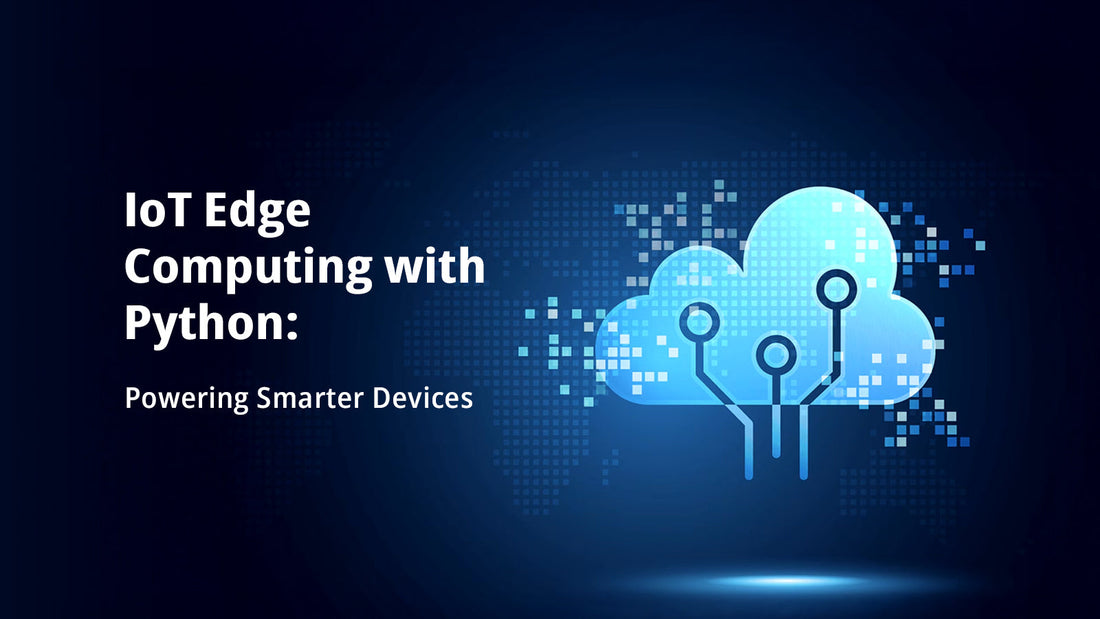
IoT Edge Computing with Python: Powering Smarter Devices
Share
The Internet of Things (IoT) is no longer a futuristic concept—it’s here, transforming industries, homes, and cities. From wearable devices to smart factories, IoT systems generate an enormous volume of data. But handling this data efficiently poses a significant challenge. That’s where Edge Computing comes into play.
By bringing computation closer to where data is generated, edge computing reduces latency, enhances performance, and improves reliability. And when combined with Python, one of the most versatile and developer-friendly programming languages, it becomes a powerful tool for building intelligent IoT solutions.
What is IoT Edge Computing?
Edge computing shifts data processing from centralized cloud servers to local devices, often called edge devices. Instead of sending all raw data to the cloud, these devices process and analyze information locally, sending only relevant insights for storage or further decision-making.
This approach offers several benefits:
- Low Latency: Faster response times, crucial for applications like autonomous vehicles or healthcare monitoring.
- Bandwidth Efficiency: Reduces the need to transmit massive amounts of data over networks.
- Reliability: Operates even with poor or intermittent internet connectivity.
- Security: Keeps sensitive data closer to the source, reducing exposure risks.
Why Python for Edge IoT?
Python has become the go-to language for IoT and edge computing because of its simplicity, vast ecosystem, and strong community support. Some reasons Python shines in this space include:
- Lightweight & Portable: Runs efficiently on single-board computers like Raspberry Pi and microcontrollers.
- Rich Libraries: Offers powerful libraries for data analysis (NumPy, Pandas), machine learning (TensorFlow Lite, PyTorch), and device communication (MQTT, CoAP).
- Cross-Platform: Works seamlessly across operating systems, making it easy to prototype and deploy solutions.
- Rapid Prototyping: Python’s syntax allows developers to experiment, test, and iterate quickly.
Applications of Python-Powered Edge Computing
- Smart Homes: Devices like thermostats, cameras, and lighting systems process data locally to respond instantly to user behavior.
- Industrial IoT (IIoT): Edge-enabled sensors monitor equipment health and predict failures before they occur.
- Healthcare: Wearable devices track vital signs and detect anomalies in real-time without depending on cloud access.
- Autonomous Vehicles: Edge devices process sensor data on-the-fly for navigation and safety decisions.
- Retail: Smart shelves and checkout-free systems analyze data locally for instant customer experiences.
Example: Edge Device with Python
A simple example of edge computing in IoT is a Raspberry Pi-based temperature monitoring system:
- Hardware: Raspberry Pi, temperature sensor (DHT11 or DS18B20).
- Python Script: Reads sensor data, processes it locally, and triggers alerts if thresholds are exceeded.
- Connectivity: Uses MQTT to send alerts to a dashboard or smartphone only when necessary.
This setup reduces bandwidth usage by sending only meaningful events rather than raw data.
Learn More: Practical IoT Edge Computing with Python
If you’re ready to take a hands-on journey into building real-world IoT edge solutions, our new book “Practical IoT Edge Computing with Python” is the perfect guide.
The Future of IoT with Python and Edge
As IoT devices become more intelligent, the role of edge computing will expand further. Python’s adaptability ensures it will remain a central player in this evolution—empowering developers to build faster, smarter, and more secure IoT ecosystems.
Organizations investing in IoT edge solutions today are setting the stage for real-time decision-making, operational efficiency, and seamless user experiences.
✅ Key Takeaway:
IoT Edge Computing with Python bridges the gap between raw data and intelligent action, enabling devices to think, learn, and respond in real time.
